2020 has given millions of people the chance to stay home for extended periods of time. Due to this, a lot of people have also ended up noticing issues in their home that they might not otherwise recognize. A brown discoloration running across one room wall, or a new faint scratching when everything else is silent, are some of those small things that need to be recognized and addressed.
In conjunction with the up coming Spring season, now is the perfect time to investigate these seemingly small issues. Just like spring cleaning tips, here are some of our top spring maintenance tips for your roof.

Inspect the Outside
- Keep a check list of things to look for in the new season: look for moss and molds, missing shingles, or trees invading the area. All of these can lead to more issues, so they need to be routinely checked for in the Spring.
- If you have a roof with appendages like chimneys, pipes, or skylights, you’ll need to climb up there and inspect the surrounding, connected area. This inspection will be important both for shingled roofs and for metal roofs, although you’ll look for different types of damage. For a metal roof, check the flashing, the rusting of the flashing can cause expensive issues later on, potentially making the home unsafe if neglected long enough. Meanwhile, for shingles, check that there are no loose pieces, curling, or popped out nails – leaving damage like this could be opening your home up to damage later on.
- During your seasonal inspection of your roof, remember to look at the soffits boards. These boards are what connect the roof to the walls of the house, so they can be metal or wood. Depending on age and weather condition, you may find the boards damaged, which in the best case can be fixed, or in the worst case replaced.
Inspect the Inside
- Don’t forget to take a look inside your attic area. After the winter months, there could always be a situation where water has gotten its way into the attic. This can result in high-cost repairs if not found quickly enough. Check for light from the roof, and check for warpage on the ceiling, light from the roof can let in damaging pests and weather, while warpage on the ceiling is indicative of current or ongoing damage.
- When you’re done inspecting the attic, your next consideration should be walking into each room of your home and checking the ceiling. If there is damage in the attic, you’ll already know the general area to look at to determine if you need to get professionals. However, if you determined that there is no attic damage, you still need to look in all of the rooms. If there is discoloration or warpage, there could be water damage and it needs to be addressed.
Clean What You Can
Now that you’ve checked for damage, it’s time to clean the roof. One of the most important roof accessories to clean is your gutters. Make sure they are cleaned of debris and have an adequate flow with no low spots – because if they got clogged or they pool water, you can suffer structural damage to your home, if not damage to your fascia boards.
Call the Professionals
The last and most important tip that we can give you, is to call the professionals. If you find damage in your home or on your roof, it could be a sign that your materials are wearing out due to age, and this compacts the issues made by rough weather. And while most people consider their roofs to be a ‘back-burner’ issue, they are extremely important because the condition of a roof can be indicative of bigger issues that need to be handled. Roofing companies tend to get very busy in the Spring, so call your local roofers and see if you can get a complimentary assessment. Doing this can give you a better idea of how long your issues can wait, and how long they can’t.
